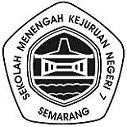Knowing Plate Tectonics and Their Part in Shaping Earth’s Exterior
Plate tectonics is a regular theory in geology that will describes the large-scale motion of Earth’s lithosphere. This scientific concept explains typically the formation, movement, and connections of the planet’s tectonic system, which are responsible for shaping often the Earth’s surface over geological time scales. The theory regarding plate tectonics provides insights into a wide range of geological trends, including earthquakes, volcanic action, mountain building, and the supply of continents and oceanic masses.
The Earth’s lithosphere will be divided into several rigid system that float atop the actual semi-fluid asthenosphere, a part of partially molten rock and roll located in the upper mantle. All these tectonic plates, which include the Pacific, North American, Eurasian, and also African plates, are in frequent motion, driven by forces such as mantle convection, slab pull, and ridge push. The interactions between these types of plates occur at their very own boundaries, where they can converge, diverge, or slide prior one another, leading to various geological features and events.
One of the key processes associated with platter tectonics is the formation associated with mid-ocean ridges, which appear at divergent plate restrictions. At these boundaries, tectonic plates move apart, allowing magma from the mantle to go up and solidify, forming completely new oceanic crust. This process, referred to as seafloor spreading, continuously contributes new material to the marine floor and pushes old crust away from the ridge. Mid-ocean ridges, such as the Mid-Atlantic Ridge, are characterized by high heat flow, volcanic activity, and the formation of hydrothermal mine, which support unique ecosystems.
Convergent plate boundaries, everywhere two plates collide, help with some of the most dramatic geological capabilities on Earth. When an oceanic plate converges with a ls plate, the denser oceanic plate is forced beneath the lighter continental plate in a very process called subduction. Subduction zones are associated with serious ocean trenches, intense seismic activity, and volcanic couronne. The Andes Mountains and also the Cascade Range are instances of mountain ranges formed through the subduction of oceanic discs beneath continental plates. Any time two continental plates are coming, neither plate is easily subducted due to their buoyancy, leading to the actual formation of extensive mountain ovens such as the Himalayas, which continue rising as the Indian Plate collides with the Eurasian Plate.
Alter plate boundaries, where dishes slide horizontally past one another, are characterized by strike-slip errors and significant seismic activity. The San Andreas Problem in California is a well-known example of a transform border, where the Pacific Plate as well as the North American Plate move side to side relative to each other. Earthquakes along transform boundaries can be in particular destructive due to the sudden launch of accumulated stress over the fault lines.
The activity and interaction of tectonic plates also play a crucial role in the distribution and formation of natural sources. Many of the world’s mineral deposits, like precious metals and hydrocarbons, are usually associated with tectonic processes. For instance , the formation of large ore deposits often occurs in aspects of tectonic activity, where warmth and pressure from volcanic and hydrothermal processes completely focus valuable minerals. Additionally , the accumulation of organic issue in sedimentary basins, created by the subsidence of tectonic plates, is a key factor in the technology of fossil fuels.
Plate tectonics is also closely linked to the long-term climate regulation and the carbon dioxide cycle. The weathering associated with silicate rocks on prude, which are continuously uplifted through tectonic processes, plays an important role in the sequestration of atmospheric carbon dioxide. Over geological time scales, this process helps regulate Earth’s climate by removing CO2 from the setting and storing it throughout carbonate rocks. Volcanic exercise, associated with plate boundaries, lets out CO2 and other gases in to the atmosphere, contributing to the and also carbon cycle and influencing climate conditions.
The understanding of plate tectonics has revolutionized our familiarity with Earth’s geological history and active processes. By studying the movement and interaction associated with tectonic plates, scientists can easily reconstruct past continental configuration settings, such as the supercontinent Pangaea, which often existed around 300 million years ago. The breakup and also drift of Pangaea generated the formation of the modern-day continents and the opening of the Atlantic Ocean. These reconstructions provide valuable insights in the evolution of Earth’s area and the forces that have fashioned it over billions of years.
The idea of plate tectonics also has practical implications for risk assessment and risk mitigation. Understanding the mechanisms of earthquakes and volcanic eruptions allows scientists to better predict as well as prepare for these natural problems. Seismic monitoring networks, early on warning systems, and geological hazard maps are essential instruments for reducing the impact regarding tectonic hazards on individual populations and infrastructure. Additionally , the study of plate tectonics informs the exploration and management of natural assets, guiding the search for mineral deposits, oil, and gas remains.
The ongoing research in menu tectonics continues to uncover new details about the dynamic procedures driving the movement of Earth’s plates. Advances within geophysical techniques, such as seismic tomography and satellite-based dimensions of plate motions, provide increasingly detailed images of the Earth’s interior and the makes at work. These insights not only expand our understanding of plate tectonics but also enhance our ability to predict and mitigate often the impacts of geological threats.
The theory of plate tectonics is a foundational concept throughout geology that explains the movement and interaction regarding Earth’s tectonic plates. This specific theory provides a comprehensive framework for understanding the formation connected with geological features, the submission of natural resources, and also the dynamic processes that appearance our planet. Through the study involving plate tectonics, scientists attain valuable insights into Global past, present, and upcoming, contributing to our knowledge of the natural world and our ability to handle geological challenges.
